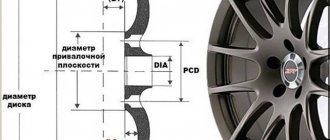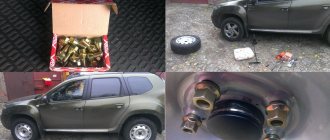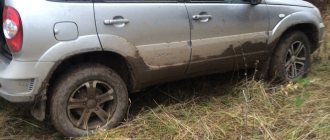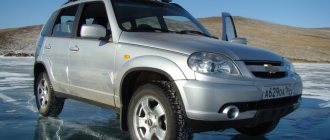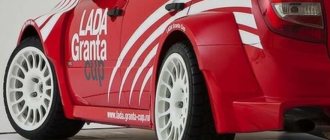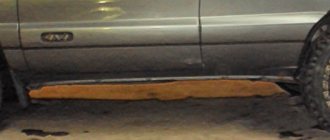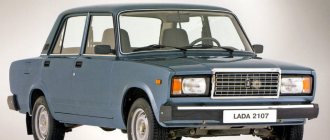| PCD value | Car makes and models |
| 4×98 | Fiat: Brava, 126, 124, Croma, Multipla, Tipo, Panda, Alfa Romeo: 155 and 164; Lada |
| 4×100 | Used on older Mini, BMW 3, Honda models: CRX, Jazz, Accord; Kia Spectra: Opel Astra, Corsa, Ascona, Zafira; Toyota Yaris, Corolla, Volkswagen Golf: Passa, Jetta, Polo. |
| 5×100 | Audi: TT and A3, Toyota: Avensis, Celica, Carina; Skoda Octavia; Subaru: Impreza, Outback, Legacy |
| 5×108 | Ferrari, Citroen Jumper and XM, Ford Mondeo and Focus; Volvo 740, 760 and 780 |
| 5×112 | Audi: 100 CS, A4, A6, A8, S2, S4; Ford Galaxy, Mercedes: 600 SL, SLK, Vito |
| 4×114,3 | Honda: Accord, Civic Vtec; Hyundai: Sonata, Accent; Nissan: Almera, Primera, Mitsubishi: Colt, Lancer, Galant; Volvo V40 and S40; Daewoo Matiz |
| 5×114,3 | Used on some “Americans”, on older Mazda models, on Honda CRV, Toyota RAV4, Lexus |
| 5×115 | Used on most models from American manufacturers |
| 5×120 | Rolls Royce, Range Rover |
| 5×139,7 | UAZ, Chevrolet Niva |
Only the most common bolt patterns are indicated. Before purchasing a disk, you must set this parameter specifically for your car.
What is the danger of incorrect wheel bolt pattern?
It is important to correctly determine the bolt pattern parameters. This action should not be neglected, since it indirectly affects the safety of the vehicle. Installing wheels without taking into account deviations in one direction or another means that the wheel will not be installed accurately relative to the axis. As a result, it will not be possible to achieve the required tightening level.
It is impossible to visually determine the correctness of the bolt pattern. The consequences of incorrect drilling will be revealed later during the ride by the following manifestations:
- there will be strong beating in the wheels;
- damage will be found in the suspension elements and in the steering mechanism;
- the risk of the wheel mounting bolts coming loose will increase.
It can be seen that from a safety point of view the consequences are very serious and can lead to an emergency.
Read also: Women's blue suit (131 photos)
How to understand the bolt pattern on wheels with an odd number of holes
How to find out the bolt pattern of a 5 bolt disc? This method is universal and suitable for measuring PCD with any number of bolts; only the formula is replaced when performing calculations. To take the measurement you will need a caliper. If you use a ruler, the error in your measurements will be too large. Follow the instructions below:
- To take measurements, take two adjacent holes and measure the distance from the nearest edges;
- The diameter of the hole is measured;
- The value of the distance and diameter is added;
Full and abbreviated bolt pattern formula
As a rule, a complete formula is indicated on the wheels from the factory, displaying all the necessary parameters. In colloquial speech, car enthusiasts often use a short and recognizable designation, which does not give a complete picture of the product. Let's consider each of the formulas separately.
Abbreviated
The shortened formula for determining the measured indicators is called PCD (Pitch Circle Diameter). It includes two sizes and looks like this: 4ˣ98 (wheel bolt pattern for VAZ-2110). The number “4” here indicates the number of notches for bolts, the number “98” is the result of a transverse measurement of their circumference.
Common PCD values: 98, 100, 108, 112, 114.3, 120, 130, 139.7.
The abbreviated formula allows you to select the required spare part that can be installed on the car. However, an incorrect bolt pattern according to other parameters will not allow full operation of the vehicle.
Full
How to find out the bolt pattern using the full formula, which is indicated on the disc at the factory and has the following format: 7.5 Jˣ15 H2 5ˣ100 ET 40 D 54.1? Let's look at what each alphanumeric group in this encoding means.
- 7.5 JX 15 – rim width 7.5 inches, diameter 15 inches. The letter “X” indicates that the disk is cast or forged, the letter “J” indicates that the product should be used only on single-wheel drive vehicles (marking for all-wheel drive vehicles is JJ).
- H2 – the number of end protrusions (humps) designed to hold a tubeless tire. Options with one protrusion (“H1”) or without them (“AN”) are possible. Hump (hillock, elevation) - ensures reliable fixation of the tire in corners, avoiding depressurization.
Marking Decoding H Hump H2 Double Hump FH Flat Hump FH2 Double Flat Hump CH Combination Hump EH2 Extended Hump EH2+ Extended Hump 2+ A.H. Asymmetric Hump - PCD 5ˣ100 is the bolt pattern formula discussed in the previous subparagraph of this article.
- ET 40 (short for German Einpress Tief) is the departure indicator. In the example shown, a positive overhang of 40 mm is indicated. If the offset is negative, a “-” sign is placed in front of the number; if it is zero, a “0” sign is placed in front of the number. The amount of overhang determines where the mating plane will be located. Deviation from the values recommended by the manufacturer leads to a change in the direction and magnitude of the forces that act on the suspension.
- D 54.1 – hub hole diameter in mm (DIA).
What do the numbers mean?
The main parameters that determine the marking of a wheel for a passenger car are:
Where is the crash written on the discs?
- R - Rim diameter (in inches);
- J - Rim width (in inches);
- DIA - Hub bore diameter (in mm);
- ET – The distance between the vertical axis of the rim to the plane where the disc abuts the hub.
Hub Bore Measurement (DIA)
Note: This value may be zero, plus, or, when the disc is very inward, negative.
This parameter is very important, since if it is chosen incorrectly, the disk may not fit in its normal place, even if all other sizes are suitable. How to find out the disc offset is shown in one of the photos above.
Types of departures: negative, zero, positive
- LZ – number of places for fastening the disk with bolts or nuts on a stud;
- PCD is the diameter of the circle in millimeters, along the perimeter of which the mounting holes are located (this is precisely the bolt pattern).
Where is the bolt pattern indicated on alloy wheels: there is complete information on the packaging
. Note: There is nowhere to see this size on the wheels unless there is a packaging box.
You have to measure this size yourself, but doing this with a tape measure or caliper is inconvenient. It’s easier to use the calculation coefficients that we presented below.
| Number of fasteners | Coefficient |
| 3 | 1,155 |
| 4 | 1,414 |
| 5 | 1,701 |
| 6 | 2,0 |
| 10 | 3,326 |
As a last resort, you can simply try the disk on the hub and try to tighten the nuts (or bolts).
How to find out the wheel bolt pattern (PCD)
If the disk is not original, but universal, it may have double drilling - for example: 5*100/5*114.3. It can be installed on cars with PCD 5*100, and on cars with PCD 5*114.3.
Universal discs with double drilling
The hub hole on universal discs is usually made larger - for example: 67.1 as for Mitsubishi, which has a bolt pattern of 5 * 114.3.
To put these wheels on, say, a Chevrolet with a 5*100 bolt pattern and a 57.1 hub, you only need a plastic adapter measuring 67.1*57.1.
Adapter rings (hub adapter)
These numbers correspond to the outer and inner diameters of the ring, with which you can change from 67 to 57 hub.
Basic disk dimensions: where to look and how to determine
Before we present information on the wheel bolt pattern inherent in cars of certain models, let’s understand their dimensions in general. After all, in order to purchase wheels, you need to know their exact parameters, or at least tell the seller the main characteristics of the car: year of manufacture, engine modification, and sometimes the body.
In the store they will select everything as it should be, but if you are going to buy wheels secondhand, you should know where the size is indicated on the rims. True, some parameters need to be measured independently.
Where is the width and diameter of the rim indicated on the disc?
Bolt tables
Calculating the bolt pattern is rarely used, because there are compatibility tables. The driver needs to find a table for a specific model and look at the parameters for it. They include all popular cars used in Russia.
| Bolt pattern | Cars |
| 4*98 | VAZ; Fiat Panda, Lineo, Qubo; Ford Ka; Lancia Delta; Peugeot Bipper. |
| 4*100 | BMW Z1; Chery; Chevrolet Aveo; Daewoo Lanos; Dacia Logan; Fiat Punto; Hyundai Accent, Getz, Solaris; Honda Accord; VAZ Largus. |
| 4*108 | Audi 80; Citroen Berlingo; Ford Fiesta, Mondeo; Mazda 2. |
| 5*100 | Audi A1 (2.3), TT; Chrysler Neon, Sebring, PT Cruiser; Honda Civic; Nissan Sunny, Sunfire; Seat; Skoda Fabia Subaru Forester, Impreza, Legacy, Outback; Toyota Avensis and Camry; Volkswagen Golf, Bora, Beetle, Polo; GAS Siber. |
| 5*108 | Aston Martin Vanquish; Citroen C5, C6; Ford Focus, C-Max; Renault Clio, Kangoo; Land Rover. |
| 5*112 | Audi A3, A5, A6, RS4, RS5; Bentley; BMW; Mercedes-Benz; Ssang Yong Actyon, Chairman; Volkswagen Jetta, Transporter. |
This table does not contain all the bolt patterns, because there are many more cars. You need to look for the bolt pattern yourself for a specific car, this will help you accurately select the wheels.
Additionally! If the discs are still selected incorrectly, they can be processed by widening the hub window and changing the locations of the holes for the bolts. This is very difficult to do; in most cases, attempts end not only in disk damage, but also in accidents.
The disc bolt pattern is extremely important, because if it is selected incorrectly, the suspension will not work as it should and the car may get into an accident. To make an accurate choice, they focus on several indicators, including the diameter of the hub, the number of holes, and the size of the circle. There are also bolt patterns that will allow you to quickly select a set of wheels compatible with your car.
Most common values
The PCD value varies not only depending on the manufacturer, but also on the model and year of manufacture. Here are the most common values:
Fiat: Brava, 126, 124, Croma, Multipla, Tipo, Panda, Alfa Romeo: 155 and 164; Lada
Used on older Mini, BMW 3, Honda models: CRX, Jazz, Accord; Kia Spectra: Opel Astra, Corsa, Ascona, Zafira; Toyota Yaris, Corolla, Volkswagen Golf: Passa, Jetta, Polo.
Audi: TT and A3, Toyota: Avensis, Celica, Carina; Skoda Octavia; Subaru: Impreza, Outback, Legacy
Ferrari, Citroen Jumper and XM, Ford Mondeo and Focus; Volvo 740, 760 and 780
Audi: 100 CS, A4, A6, A8, S2, S4; Ford Galaxy, Mercedes: 600 SL, SLK, Vito
Honda: Accord, Civic Vtec; Hyundai: Sonata, Accent; Nissan: Almera, Primera, Mitsubishi: Colt, Lancer, Galant; Volvo V40 and S40; Daewoo Matiz
Used on some “Americans”, on older Mazda models, on Honda CRV, Toyota RAV4, Lexus
Used on most models from American manufacturers
Rolls Royce, Range Rover
UAZ, Chevrolet Niva
Only the most common bolt patterns are indicated. Before purchasing a disk, you must set this parameter specifically for your car.
How to measure yourself
The disc bolt pattern also includes the distance between the windows. You can measure it using a caliper or ruler. The measurement is taken from the center of one hole to the center of the other. There are two ways: the distance between adjacent and farthest holes.
Adjacent holes
The indicator under consideration is determined taking into account the dimensions of the circle on which the centers of the slots for the bolts are located. The diameter is determined using compatibility tables or measured using a ruler.
To do this, measure the distance between adjacent bolts, and then multiply the resulting figure by a coefficient depending on the number of holes. The transverse circumference of VAZ cars is 98 mm for passenger cars and 139.7 mm for the Niva SUV.
| Number of holes | Coefficient |
| 3 | 1,155 |
| 4 | 1.414 |
| 5 | 1,701 |
| 6 | 2 |
| 10 | 3,326 |
Far holes
The simplest is to measure on disks with an even number of holes (for 4, 6, 8 bolts), the distance between opposite holes will be the PCD value.
For disks with 5 bolts, it is measured by the distance between any non-adjacent holes, and the resulting figure is multiplied by 1.051.
Hub window diameter
The indicator of the central hub window is indicated both in the tables and in the complete bolt pattern formula, which will be discussed below. In the absence of the necessary information, this indicator can be easily measured using a ruler or caliper. The diameter of the VAZ-2110 hub is 58.6 mm.
Note: it is not always possible to measure the central hole, since on some cars it is of irregular shape. A striking example is the pre-restyling version of Daewoo Nexia.
The bolt pattern of the wheel rims is determined taking into account their offset. Overhang is the ratio of the vertical axis of symmetry of the disk to the point of contact with the hub. The offset can be negative, positive or zero.
It is possible to install a disk that is incorrectly selected for this factor. However, it disrupts the operation of the suspension and makes the car unsafe.
Marking
As an example, consider the markings of the 9J x20H PCD 5×130 ET60 DIA 71.60 wheel rim:
- The number 9 indicates the width, measured in inches. To convert inches to centimes, the total figure is multiplied by 25.4.
- The letter J indicates the design elements: the shape of the disc flanges. This parameter does not play an important role in the selection.
- The letter X denotes the indivisibility of the disc.
- The number 20 indicates the landing diameter of the wheel product. This indicator corresponds to the fit of a car tire.
- The letter H denotes the presence of one hump or ridge on the rim.
- The abbreviation is PCD 5×130, where the number 5 indicates the number of drillings for fastening the nuts or bolts and the number 130 indicates their PCD diameter in millimeters.
- The ET60 marking indicates disc offset. In this situation the figure is 60 mm.
- The DIA value 71.60 indicates the diameter of the center drill. Typically, DIA corresponds to the fit of the hub and is indicated in millimeters. If the DIA is greater than the hub diameter, then a centering ring is used to install the disc.
The following information is also included with the label:
ISO, SAE, TUV - these abbreviations indicate the organizations that tested the wheel product, similar to the Russian GOST. The standards that correspond to the wheel marking are also indicated.
Maxload indicates the permissible load on a car wheel. This indicator is indicated in kilograms and pounds.
The opinion of car enthusiasts about the wheel bolt pattern
- The user installed 6.5x15 ET38 wheels with 195x65 tires on his car. The car immediately became taller, but when driving over uneven surfaces, the front wheels began to catch the fender liners at the junction of the wing and the bumper. The author decided to install new struts with spacers and look at the behavior of the car after driving 200 km laden. New struts from Ardeo instead of the old worn ones made the car more assembled and rigid. Steering the car has become easier, and large potholes are handled more accurately. Although minor irregularities began to be more clearly felt.
- Regarding the bolt pattern, the user is categorical and does not recommend installing, for example, 98×4 wheels on a 100×4 car. In any case, the result will be disastrous - the bolts will not tighten properly, the wheels will start to beat. As a negative example, owners of foreign cars with parameters 100×4 are cited who are trying to change the standard wheels to domestic ones with a bolt pattern of 98×4. If the car's drilling pattern is unknown, the author recommends finding it out from the car dealer.
- “Wheel rims with correct drilling are a very important unit, the risk here must be minimal!” - this is what the user thinks.
How to measure wheel bolt pattern
To change the disc bolt pattern, determine the exact number of mounting holes for bolts or nuts. Because for different numbers of holes, different measurement methods are used.
To clarify the disc bolt pattern, read the technical data of the model. If there is no information, you can calculate the bolt pattern yourself:
1. Using a ruler, measure the distance between the far walls of adjacent holes in millimeters, and then add their diameter to this number. You will get a distance that will be equal to “ N ”.
2. We look at the number of holes and, depending on their number, multiply the resulting “N” by the desired coefficient.
- 3 holes - 1.55
- 4 holes - 1.414
- 5 holes - 1.701
- 6 holes - 2
- 10 holes - 3.326
3. After the calculations, when obtaining a fractional number, round the result up.
Formula for calculating bolt pattern:
PCD=Nx(coefficient)
Sometimes car companies do not use certain bolt pattern sizes, such as Mercedes. Their specifications do not include size 111, so if in your calculations it turns out this way, then round the number to 112. Find out the ranges of possible sizes for other brands in advance before making calculations.
Remember, independent calculation of the bolt pattern is carried out more for checking and reinsurance, since there is a compatibility table. It helps you calculate PCD based on your car make and model.
Compatibility tables for different cars
To make it easier to select wheels, below we will post compatibility tables for some car brands. These tables contain only general information, and before purchasing you should definitely pay attention to the labeling and other parameters.
Wheels should be selected based on compatibility rather than aesthetic characteristics. Make sure that absolutely all parameters correspond to the standard ones, so as not to endanger the lives of road users.
- Author: Andrey
Rate this article:
- 5
- 4
- 3
- 2
- 1
(10 votes, average: 4.3 out of 5)
Share with your friends!
Home →
Device →
Disc size indicators
There are five main sizes, an error in determining which will result in the impossibility of installing the wheel.
These include:
- number of bolt holes (LZ);
- the distance between them;
- diameter of the circle on which they are located (PCD);
- diameter of the central (hub) window (DIA);
- departure (ET).
The number of windows for bolts on passenger cars varies from 3 to 6. For trucks, this figure reaches 12-15 pieces. Togliatti-made cars have 4 bolt entries. The exception is the Lada Niva, the wheels of which are secured with five bolts each. The number of holes is measured visually by simple counting.
Spacers
Sometimes you can hear questions about what to do if the wheel rims do not fit in the mounting holes with the hub. For such a case, there are special spacers. They are installed on the hub, and the disk is already attached to them. Let's look at how this works. Let's say your hub has 4x108, and the disc has a spread of 4x98. Of course, such wheels will not voluntarily fit on a car. To install, we purchase a spacer with mounting on a 4×108 hub; the holes on it must correspond to 4×108. When installing, please note that the use of such a device significantly reduces the reliability of the structure.
Conclusion
. Automakers are increasingly striving to unify some design elements. Therefore, more and more often they are moving to certain standards that simplify machine maintenance. But this process is far from complete. And the question of which cars have a 4x108 bolt pattern is still relevant. In fact, there are few such models, and most of the cars with this indicator are far from new.
Wheel rim bolt pattern
If you decide to change the wheels on your car to new alloy wheels or are simply planning a seasonal change of wheels, then you need to take into account such a parameter as the wheel bolt pattern. What does it mean.
The bolt pattern includes several parameters, such as:
- number of disk holes for hub bolts, LZ marking (i.e. those bolts with which we fasten the wheel). Their number is usually from three to six for passenger cars;
- the holes are located at a strictly defined distance from each other;
- the holes are located at a certain diameter specified at the manufacturer. Typically this parameter is designated as PCD. (in other words, this is the diameter of the circle on which the holes for the bolts are located) Consider an example: 5x112 - this means 5 bolts located on a circle with a diameter of 112 in millimeters.
Why know the chatter
This is why you need to know these parameters. We install the disc on the hub and tighten the fastening nuts with a force of 62–77 Nm, strictly according to the factory requirements. However, when installing a disk, the manufacturer leaves some gap between the stud and the mounting hole, that is, the stud and the hole have a certain gap, which, when tightened, is selected with tapered nuts and tapered holes on the disks.
This way the wheel is centered and tightened, fitting tightly to the hub mating plane.
If we come across a disc with a bolt pattern of 5x140.5, we won’t notice a difference of a millimeter by eye. In this case, the wheel can fit normally onto the studs. However, at the moment when we begin to tighten the nuts, only one of the five will be tightened exactly along the cone, and the rest will either be undertightened, or the wheel will be installed with a slight distortion. It’s clear how this can end – vibration of the wheel at speed, the possibility of the disc unscrewing while driving. Note that this is due to a one millimeter misalignment in the PCD setting.
Definition of bolt pattern
Very often, car owners have to determine the wheel bolt pattern . If everyone can determine the number of mounting bolts, then the diameter of the circle of their location is much more difficult to determine.
Let's consider a more understandable method of calculation. For clarity, look at the figure. So, we need to find out the value of A. We take a caliper and measure the distance between the walls of adjacent holes. Now we add to this number the diameter of the mounting hole itself. The result is the distance between the centers of adjacent holes. Formulas are used depending on the number of holes on the disk. The resulting value B is PCD.
The resulting value B is PCD
Disc bolt pattern is considered a factor that in one way or another affects traffic safety. That's why you shouldn't neglect it. If there is no compliance, the wheel will not be accurately aligned with the axle and, as a result, the required tightening torque will not be obtained. And it can be extremely difficult to visually notice deviations from the norm, but when driving such a wheel will have increased runout. After some time, this deforms the parts of the steering mechanism, as well as the suspension. There are also cases when the wheel becomes completely unscrewed while driving.
There are car enthusiasts who adjust the bolt pattern of a disk whose diameter (PCD) is slightly larger than the original one. In this case, special centering rings are used for installation. This technique has its adherents and opponents. You should not conduct experiments if you are not sure of the safety of movement. Because in case of failure, no luxury of appearance is worth the losses incurred.
Disc overhang size
Offset is one of the most important criteria for selecting wheels. It determines the distance between the vertical axis of symmetry of the disk and the plane of contact between the disk and the hub.
The offset determines the distance between the vertical axis of symmetry of the disk and the plane of contact between the disk and the hub
Disk offset occurs:
- positive (the vertical axis of the disk is located behind the mating plane);
- zero (the disk axis is superimposed on the mating plane);
- negative (the disk axis is located in front of the mating plane).
The disc offset parameters are strictly regulated by the vehicle manufacturer and are directly related to the suspension kinematics. A change in the standard overhang value is allowed by no more than 5 mm.
Overhang amount
Every vehicle owner strives to make the car original and unique with the help of tuning. A lot of effort and time is spent on selecting disks. Some motorists do not look at the standard markings, ignore the requirements and install low-profile wheels, forgetting that any deviations are unacceptable. Mismatched wheel rims lead to the car becoming unsafe and directly threatening the lives of all road users.
After deciding on tuning, you should not immediately run to the store and buy the wheels you like for your car, but you should consider several important selection parameters. You should not count on the help of consultants in the store; many of them are simply incompetent in matters of choice and try to simply sell the part, especially if they notice that you are interested in it.
To avoid waste of money, you must choose a disk strictly according to its parameters. There are a huge number of myths, and many prejudices have absolutely no relation to the real situation.
Motorists are sure that the offset of a wheel rim is the value that denotes the protruding part of the rim above the body of the vehicle. In fact, the parameter carries a slightly different meaning. Any disk in a car has a mating plane that comes into contact with the wheel hub when installing the disk. As a result, the offset is the distance from the mating plane of the disk to the vertical axis of symmetry of the disk.
Do not ignore the departure parameter. He is directly responsible for driving safety in the vehicle. If you choose wheels with the wrong offset, you increase the risk of accidents and premature wear of the main components. Thus, an incorrectly selected parameter can result in premature wear of the suspension.
Basically, motorists, when choosing wheels for their car, can make three common mistakes:
- They blindly believe the stories of consultants, hoping to receive highly qualified assistance in choosing;
- They ignore information about the markings that are applied to the standard disc from the car manufacturer;
- They make a choice only according to the parameters of appearance, color, geometric features, and other aesthetic factors.
In order to purchase a suitable part, it is necessary to correctly calculate the offset parameter:
ET=ab/2
In the formula, the symbol “a” denotes the distance between the inner plane and the part of the disk that is in direct contact with the hub, and the symbol “b” denotes the width of the disk profile. This information is presented more clearly in the figure:
All data for calculating the offset parameter can be measured manually with a millimeter ruler
The result is obtained in millimeters. The offset can be positive, negative, or equal to zero.
If the offset is positive - the axis is slightly shifted from the place of fastening, zero parameter - the axis and plane are completely consistent and fit tightly, negative parameter - the plane is outside the axis.
Most often on cars there is a positive offset value
Video: wheel spacers
Features of the VAZ
Many car enthusiasts are interested in the question of what wheel bolt pattern is on domestic VAZ cars.
Here PCD is standard - 4*98. But such a bolt pattern has one big disadvantage - there is no room for flight of fancy and the possibility of choosing a more unique disc.
At the same time, “next door” there is a PCD standard - 4*100, where the choice of disks is much wider. So is it possible to take a risk with a replacement? As we have already mentioned, with standard tightening methods this is unacceptable, because even a small error will not allow the screws to be properly tightened.
There are car enthusiasts who take certain risks. They use longer screws or do not tighten one of them at all. But this is dangerous - such methods can lead to serious consequences (including road accidents).
But there is a way out.
To install 4*100 wheels on VAZ cars, you can use special bolts with an offset center or an eccentric (they are easy to find in car stores or on the Internet).
In addition, studs from the VAZ 2108 cylinder head type are often used.
The peculiarity of the installation is that the studs are screwed directly into the hub, and the disc is tightened with the help of other nuts (you can “borrow” it from Niva).
Another option is to bore a hole in the hub. In this case, it will be possible to install disks with different PCD bolt patterns - 4*100 or 4*98.
Is it possible to install a product with inappropriate parameters?
Disc with centering ring
It is possible to install the product on a car with unsuitable bolt pattern parameters. For this purpose, special rings called centering rings are often used. With their help, you can set a parameter specifically for installing selected disks. This may result in errors in balancing and violation of suspension geometry. Therefore, it is strictly not recommended to carry out such operations, since they can disrupt the performance of the machine in motion.
The bolt pattern is an important parameter that can be used to determine how the disc is attached to the chassis structure. You can measure it yourself or find out from official sources, which is preferable.
Sources
- https://rad-star.ru/pressroom/articles/chto-takoe-razboltovka-kolesnykh-diskov/
- https://ZnanieAvto.ru/skaty/razboltovka-kolesnyx-diskov.html
- https://kolesadom.ru/kakie-byvajut-razboltovki-koles-vylet/
- https://AutoVogdenie.ru/razboltovka-kolesnyx-diskov.html
- https://BlackTyres.ru/informaciya/informatsija-o-diskah/razboltovka-kolesnyh-diskov/
- https://carnovato.ru/markirovka-kolyosnyx-diskov/
- https://kolesa.guru/diski/razboltovka.html
